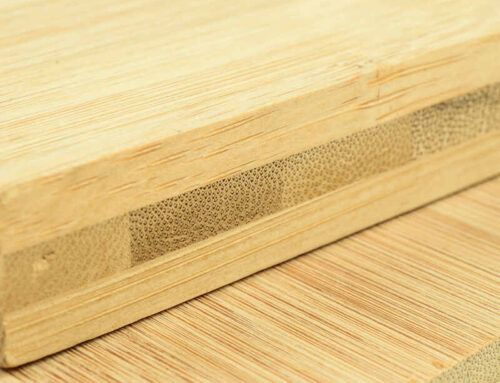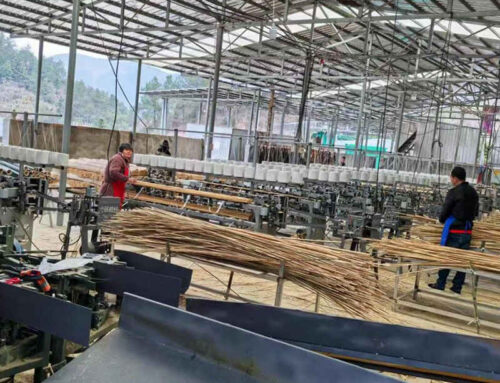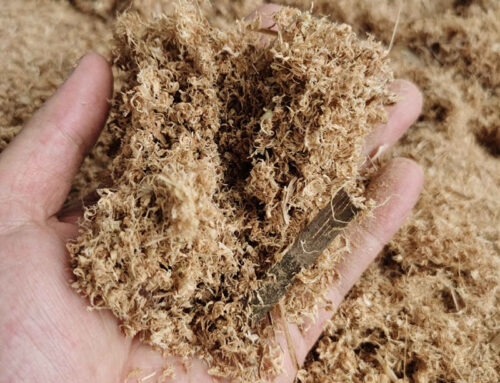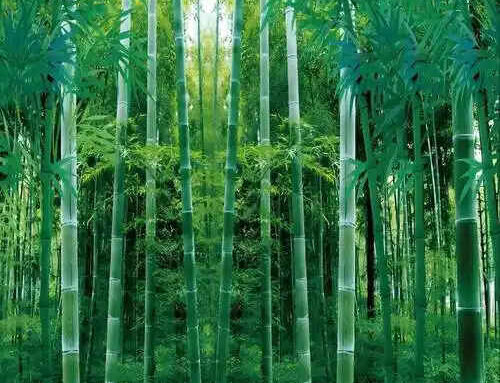In the relentless pursuit of higher yields and technological efficiency, modern agriculture often overlooks the simplest, most elegant solutions. We invest in complex irrigation systems, synthetic fertilizers, and genetically modified seeds, all while a powerhouse of sustainable potential grows quietly, and abundantly, in the background.
That powerhouse is bamboo.
More than just a symbol of resilience in Asian art or the preferred food of the elusive giant panda, bamboo cane is one of the most versatile, durable, and eco-friendly materials available to farmers all over the world. For centuries, it has been the backbone of small-scale and traditional farming systems. But now, in an era defined by climate change and resource depletion, its role is more critical than ever.
This isn’t just a nostalgic return to rustic ways. It’s a forward-thinking strategy for building a more resilient and regenerative agricultural model. Let’s delve into the world of bamboo cane and explore its myriad uses on the agriculture.
The Bamboo Advantage: More Than Just a Fast-Growing Grass
First, it’s necessary to understand what makes bamboo so special. Botanically, it’s a grass, not a tree, and this distinction is the source of its superpowers.
- Unmatched Growth Rate: Certain species of bamboo can grow up to 90 cm (3 feet) in a single day, making it one of the fastest-growing plants on the planet. A bamboo grove can be harvested in 3-5 years, compared to decades for most timber trees.
- A Carbon-Sequestering Champion: Bamboo is a voracious consumer of carbon dioxide and a prolific producer of oxygen. Its rapid growth and dense biomass make it an exceptionally effective tool in the fight against climate change.
- Self-Renewing and Sustainable: When harvested correctly—cut at the base without disturbing the root system—bamboo simply grows agin. There’s no need for replanting, making it a perpetually renewable resource.
- Incredible Strength-to-Weight Ratio: Pound for pound, bamboo has a tensile strength comparable to steel and a compressive strength greater than concrete. This makes it incredibly strong yet lightweight and easy to handle.
- Thrives on Marginal Land: Bamboo doesn’t need good agricultural land. It can grow on slopes, degraded soils, and in areas where other crops fail, helping to prevent soil erosion and rehabilitate damaged ecosystems.
With this impressive resume, it’s no wonder that bamboo cane is an agricultural asset waiting to be fully utilized. Its applications are limited only by the farmer’s imagination.
- Building the Framework: Structural Uses in Agriculture
The most traditional and widespread use of bamboo in farming is for creating structures. Its combination of strength, flexibility, and low cost is the reason why bamboo cane widely used..
- Trellising and Plant Support
For vining crops like tomatoes,cucumbers, peas, beans, and melons, a sturdy support system is essential. Bamboo poles are the ideal material for this task.
- Why it Works: They are straight, strong, and can be pushed directly into the ground. Their natural nodes provide perfect grip for tying plants with twine.
- Design Flexibility: Farmers can create simple A-frame trellises, vertical wigwams, or elaborate horizontal netting systems. The flexibility of bamboo allows it to sway in the wind without snapping, providing a resilient support system that outlasts brittle plastic or metal alternatives.
- Economic Sense: For a farmer who is not rich, buying metal cages or plastic stakes represents a significant recurring cost. A well-maintained bamboo trellis, sourced from their own land or a local supplier, can last for several growing seasons with minimal investment.
- Greenhouse and Polyhouse Construction
While modern commercial greenhouses are often made of steel and polycarbonate,bamboo offers a brilliant, low-cost alternative, especially for small to medium-scale operations.
- The Framework: The natural strength of thick-walled bamboo poles (often species like Dendrocalamus asper or Bambusa balcooa) makes them perfect for the curved arches and purlins of a greenhouse.
- Benefits: A greenhouse made of bamboo is not only cheaper to build but also has better thermal insulation properties than metal. It creates a more stable microclimate, reducing the energy needed for heating and cooling. What is more, it’s a breathable structure, reducing condensation and associated fungal diseases.
- Fencing and Boundary Markers
Protecting crops from livestock and defining property lines is a basic agricultural need. Bamboo is a perfect material for this purpose.
- Types of Fences: From simple split-bamboo fences woven together with wire to sturdy living fences created by planting a dense row of clumping bamboo, the options are diverse.
- Durability: When treated properly (more on that later), a bamboo fence can be used for 5-10 years, resisting weather and pests far better than that of wooden posts.
- Livestock and Aquaculture Management
Bamboo’s utility extends beyond crops into animal husbandry.
- Poultry Pens: Lightweight bamboo cages and pens are used for poultry, providing good ventilation and a sturdy enclosure.
- Fish Farm Cages: In aquaculture, especially in Southeast Asia, bamboo is used to construct floating cages and pen structures in lakes, rivers, and coastal waters. Its buoyancy and resistance to water make it ideal.
- Animal Shelters: Simple, open-sided shelters for goats, cattle, or other livestock can be promptly and cheaply constructed using bamboo for the frame and thatch for the roof.
- Nurturing the Soil and Conserving Resources
Bamboo’s role isn’t limited to above-ground structures. It plays a crucial part in sustainable soil and water management.
- Mulching for Moisture and Weed Control
Chopped or shredded bamboo makes an excellent organic mulch.
- Weed Suppression: A layer of bamboo mulch blocks sunlight, effectively suppressing weed germination and growth.
- Moisture Retention: It acts as a blanket, reducing water evaporation from the soil surface. This is crucial in drought-prone areas, reducing irrigation frequency and conserving precious water.
- Soil Health: As the bamboo mulch slowly decomposes, it adds valuable organic matter and silica to the soil, improving its structure, fertility, and water-holding capacity.
- Erosion Control on Slopes
Farmland on slopes is highly vulnerable to erosion from rain and wind. Bamboo is a powerful partner in the fight against soil loss.
- Living Barriers: Planting bamboo in contour lines across a slope is a very effective form of natural erosion control. Its dense, fibrous root mat, which can extend deep into the soil, acts like a net, holding the earth firmly in place.
- Check Dams and Retaining Walls: Small check dams and retaining walls can be built using bamboo weirs and baskets filled with stones. These structures slow down water runoff, allowing it to percolate into the ground and preventing the formation of destructive gullies.
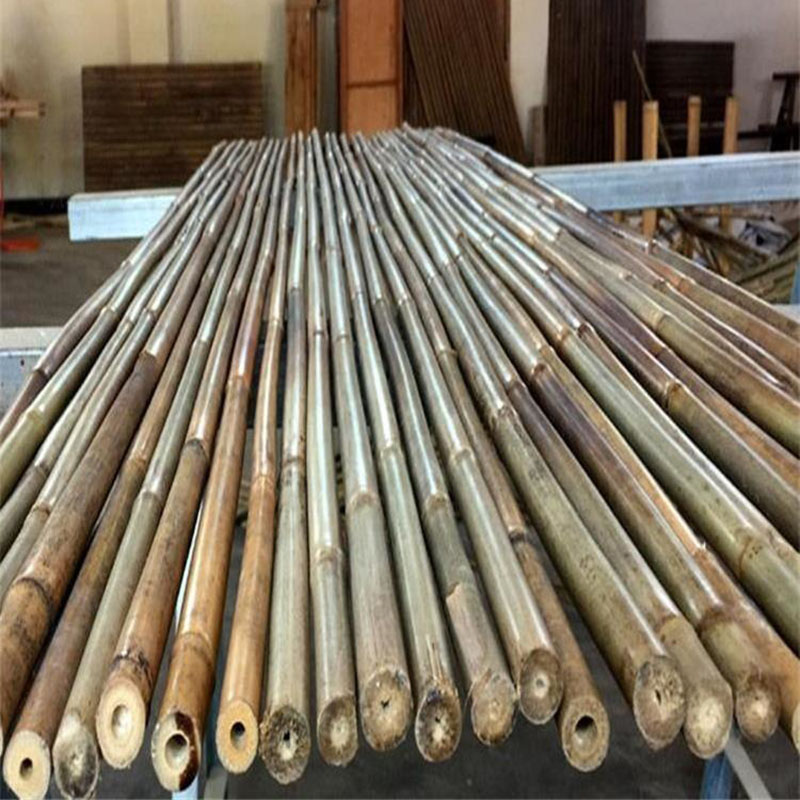
- The Tools of the Trade
Before the advent of plastic and cheap metal, bamboo was the material of choice for a vast array of farming tools and implements.
- Watering Cans and Sprinklers: Simple sections of large-diameter bamboo with holes drilled in them can be used as effective, gentle sprinklers for seedlings.
- Rakes and Brooms: Bamboo tines make for flexible, durable rakes for gathering leaves and grass. Stiff bamboo bristles are perfect for making robust brooms for cleaning barns and yards.
- Baskets and Carrying Poles: The quintessential image of an Asian farmer often includes a pair of baskets suspended from a bamboo pole across their shoulders. This design is ergonomic, allowing for the transportation of heavy loads like harvests, fertilizer, or fodder over long distances.
- Seedling Trays and Pots: Split and woven bamboo can be crafted into biodegradable seedling pots. These can be planted directly into the soil, minimizing root disturbance—a pioneer of the “pot-to-plot”idea.
- From Plant to Product: Processing and Value Addition
The use of bamboo isn’t confined to the field. It forms the basis of numerous on-farm processing activities that add value and create additional income streams.
- Drying Racks and Screens: For farmers drying herbs, teas, fruits, or grains, bamboo is the ideal material for constructing clean, well-ventilated drying racks and sieves. It doesn’t rust, doesn’t leach chemicals, and allows for optimal air circulation.
- Storage Bins: Woven bamboo baskets and bins are traditionally used for storing grains and pulses. They are breathable, which helps prevent mold, and can be lined with paper or cloth to prevent dust.
- Compost Bins: Constructing a three-bin compost system with bamboo poles and wire mesh is a cheap and effective way to manage farm waste and create rich, organic compost.
Addressing the Challenges: Durability and Pests
For all its benefits, bamboo is not without its challenges. The two primary concerns are its susceptibility to powderpost beetle infestation and decay from fungi and moisture.
Fortunately, these issues can be effectively managed with simple, non-toxic treatments:
- Harvesting at the Right Time: Bamboo harvested during the dry season, when the sap sugar content is lowest, is naturally more resistant to pests.
- Water Leaching: Submerging freshly cut bamboo in running water for several weeks leaches out the starches and sugars that attract beetles.
- Smoke Curing (Traditional Method): Passing the bamboo poles through a controlled, this process not only dries them quickly but also deposits a protective tar layer on the surface.
- Boric Acid Borax Treatment: This is the most common and effective modern method. Soaking or applying a solution of borax and boric acid makes the bamboo poisonous to insects and fungi, extending its life to 50 years or more without the environmental toxicity of chemical pesticides.
The Future is Bamboo: A Conclusion for a Regenerative Agriculture
In a world grappling with the environmental consequences of industrial agriculture, bamboo presents a compelling case for a return to intelligent, nature-based solutions. It is not a rejection of progress, but an integration of ancient wisdom with modern ecological understanding.
By incorporating bamboo cane into our agricultural systems, we can:
- Reduce Reliance on Plastics and Steel: Replacing plastic trellises, metal stakes, and synthetic fencing with bamboo completely cuts down on the carbon footprint and non-biodegradable waste associated with farming.
- Build Farm Resilience: Bamboo groves act as windbreaks, improve local biodiversity, and create a microclimate that benefits adjacent crops.
- Create Circular Economies: A farmer growing bamboo can become self-sufficient in their material needs, from trellises to fencing. Surplus bamboo can be sold as raw material or crafted into value-added items, creating a virtuous cycle of income and sustainability.
- Heal the Land: Using bamboo for erosion control and planting it on degraded land actively rehabilitates ecosystems, sequesters carbon, and improves watershed health.
In a word, the bamboo cane is more than just a stick in the ground. It is a symbol of a different approach—one that is resilient, renewable, and in harmony with the natural world. It’s time we stopped overlooking bamboo cane and started to recognize it for what it truly is: an indispensable partner in cultivating a healthier earth, one field at a time.

